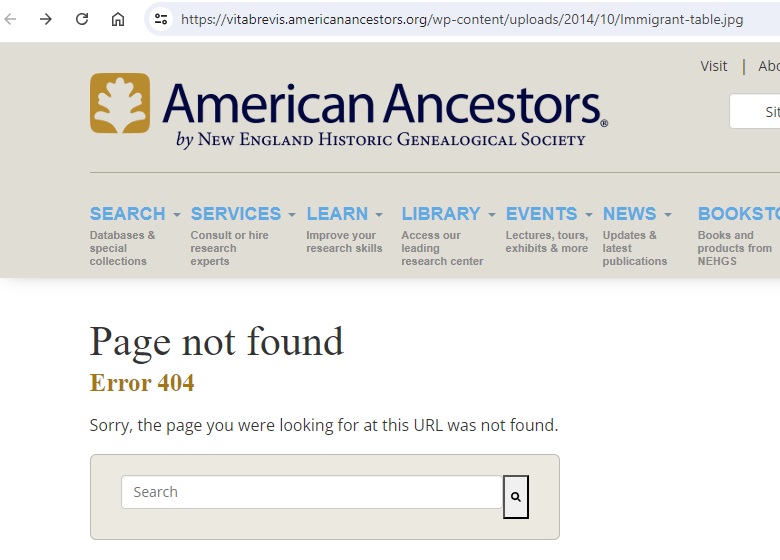TL;DR -- There seems to be a common problem for some families who had the frontier experience that is harder than that of the wilderness in terms of tracking. As the edge moved west, consistent paperwork lagged. To be expected.
---
The computer has brought forth lots and lots of stuff. Some might be good; a lot is not. However, research reports can be on the good side of things. And, in history/genealogy, the web (computer's gift) has brought lots to bear. For instance, this post from 2014 talks a little about research being done by NEHGS staff on their ancestors. The image on the left came from this post. It shows the arrival years. Notice the peak around 1635. And, the drop off at 1640 is obvious. The image on the right shows the spread of the 5th generation taken from the research of the GSMD (How many years are there in a generation?). This work was in 2018. Both of these came from the Vita Brevis blog that started in January 2014.
But, we are using it in the genealogy/history sense. The 5th generation bore the brunt of the Revolution. The 6th generation were those too young to participate. However, by 1800, they were adults. Ignoring the War of 1812 for this view, we can see that lots of that generation moved taking the 7th generation with them. Our focus is the western expansion where people from the northern and the southern New England met up in the west and intermingled.
By way of comparison, we also include the 4th generation who provided the leadership in the Revolution having been trained under the auspices of the King. That is, the story will pick up with the 5th but have material about the influence of the 4th. Below are some examples including some that are post-Revolution period across several families who were spread around. What we have noticed is that there were many families who moved once peace was settled, and Thomas Jefferson opened up the west. The experience of those families resulted in an informational gap that researchers will have to fill in. The issues get more difficult as the movement went further west.
- John Sayward (4th gen) - His parents were in Gloucester where he was born, but they had come down from Maine due to troubles up there. John left the area but did not go far. He was in Ipswich and tracked down through a friend, John Leatherland, with whom he served in the French/Indian affair and whose sister, Elizabeth, he married. John Sayward also served in the Revolution. See TEG, Vol. 34:4 (TGA Vol I:2).
- John Graves (5th gen) - His parents went out in Ipswich Canada. What? Turns out that this is upper Worcester County. Indian problems sent the family back to Ipswich. See TEG, Vol. 34:2 (TGA, IV:1). This is an example of the early western movement.
- Early Ipswich family (5th gen) -- Went south to CT under the auspices of the church. Then, one side went west to NJ; the other returned to MA.
- Lyman Porter (7th gen) - His father was the 6th gen and went out west. Lyman married into a family that was out of both north and south New England. Lyman is buried in NE. His wife, Caroline, is buried in Los Angeles CA. See TGA Vol. III:1. See Remarks (11/01/2021) about the new MF database of applications to 1900 where on can look up names. Sure enough, Lyman is there with a daughter and brothers. We will use Lyman as the core of the Lost Generation.
- Family out of NC (7th gen) - Post the revolution, the family went to TN (following Boone). There, they were involved in establishing a church that spread through TN, the surrounding area, and overseas. The next generation took the family (6th gen) to the western edge of MO in the 1820s which is quite early and where they continued the church work which included circuit riding to visit pioneering families (sometimes being away months at a time). Then, there elements of AR, OK, and early TX.
- Family out of MA (6th gen) - They moved west through NY, OH, and IN. The western trek through succeeding generations include IA, NE, SD, ND, and MT.
- Family out of MA (6th gen) - Stopped in NY. Then, a generation moved south and then west. However, the MA-NY movement has not been established in detail as of yet. The case, though, illustrates the issues.
Remarks: Modified: 07/11/2024


No comments:
Post a Comment